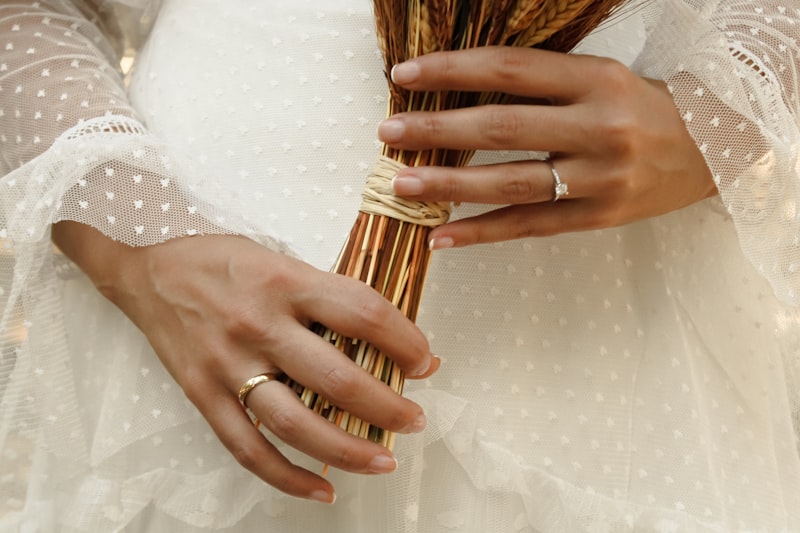The Significance of Bridal Accessories in Culture
The Significance of Bridal Accessories in Culture
Bridal accessories have long been an integral part of wedding culture around the world. From elegant veils to exquisite jewelry, these adornments not only enhance the bride’s appearance but also carry significant meaning and traditions. In this article, we will explore the various bridal accessories and their cultural significance across different regions, while also answering some related questions.
Understanding Bridal Accessories
Bridal accessories can be considered as the finishing touches that complete a bride's wedding look. They vary widely in style, material, and significance depending on cultural backgrounds. Below is a table summarizing some common bridal accessories and their meanings in various cultures:
| Accessory | Cultural Significance | Country/Region |
| Veil | Symbolizes modesty and purity, often believed to protect the bride from evil spirits. | Western cultures |
| Tiara | A sign of royal heritage, indicating that the bride is a queen for the day. | Various cultures |
| Henna | Represents good luck and beauty; applied to the bride’s hands and feet. | Indian culture |
| Flower crown | Symbolizes fertility and a connection to nature. | Western and Indigenous cultures |
| Garter | Traditionally thrown by the bride to signify good luck to the unmarried guests. | Western cultures |
The Role of Bridal Accessories in Different Cultures
Bridal accessories vary significantly based on cultural contexts. For example, in Western societies, a wedding veil is a common sight that represents purity and sometimes, social status. Traditionally, it is worn over the face during the ceremony and lifted by the groom to symbolize the beginning of married life.
In contrast, in Indian weddings, the significance of bridal accessories like bridal mehndi (henna) plays a considerable role. The intricate designs, applied to the bride’s hands and feet, symbolize fertility, beauty, and the joy of marriage. These designs often include hidden symbols representing the groom’s initials, adding a layer of intimacy to the whole experience. The application of henna usually takes place during a dedicated ceremony called the Mehndi, where the bride is celebrated with music and dance.
Different Types of Bridal Accessories
Bridal accessories come in numerous forms. The most notable types include:
- Jewelry: Necklaces, earrings, and bracelets are designed to complement the bridal gown and enhance the overall look. Silver and gold adornments hold different meanings in various cultures.
- Headpieces: Tiaras, hairpins, and floral crowns serve to add elegance and charm. Different societies have unique customs related to headpiece styles, such as the use of flowers in tropical regions.
- Footwear: Bridal shoes also have cultural significance. For instance, embroidered khussas are popular in South Asian weddings, reflecting traditional craftsmanship.
- Veils: The length and style of the veil can indicate social status and are chosen to complete the bridal ensemble aesthetically.

Symbolism Behind Popular Bridal Accessories
Bridal accessories often come with rich layers of symbolism. For instance, wearing pearls, which symbolize purity and innocence, is a common practice in many cultures. In certain Western traditions, it is said that “something old, something new, something borrowed, something blue” brings good luck to brides, encouraging them to incorporate specific items into their attire, including those that may be gifted by loved ones.
Moreover, the practice of wearing a garter dates back to medieval times where it was believed that it brought good fortune to the groom. Today, tossing the garter has transformed into a fun wedding tradition, fostering a lively atmosphere among guests.
Modern Trends in Bridal Accessories
As societies evolve, so do bridal fashion trends. Modern brides are opting for unique accessories that reflect their personalities and values, breaking traditional norms. For instance, many brides are choosing to forgo veils in favor of floral crowns or custom-made hats that symbolize their individuality. Others prioritize sustainable fashion, seeking eco-friendly accessories made from ethically sourced materials.
Social media influence has also reshaped how bridal accessories are perceived. Platforms like Instagram and Pinterest showcase a plethora of ideas, inspiring brides-to-be to experiment with bold statements or minimalist styles that align with contemporary aesthetics.
Frequently Asked Questions
What is the importance of bridal accessories?
Bridal accessories play a significant role in enhancing the bride's appearance and signify cultural traditions, making them integral to wedding ceremonies across the globe.
How can I choose the right bridal accessories?
When selecting bridal accessories, consider your wedding theme, personal style, and cultural significance. Make sure that they complement your dress while adding an extra layer of beauty to your overall look.
Are bridal accessories only for the bride?
While bridal accessories are primarily associated with the bride, there are also complementary accessories for bridesmaids and flower girls that enhance the overall wedding aesthetic.
Conclusion
Bridal accessories play a profound role in the celebration of marriage, carrying traditions and symbols that elevate a wedding’s significance. By understanding the cultural context behind these elements, couples can make informed decisions regarding their wedding style, reflecting their heritage while embracing modern aesthetics. As you plan your special day, consider the unique meanings and trends associated with bridal accessories, and remember that these details, however small, contribute to the beautiful tapestry of your wedding story.
Final Suggestions: When selecting bridal accessories, think about what resonates with you culturally, how these items connect to your personal story, and how they can elevate your overall wedding theme. Incorporate elements that are meaningful to you and your family, ensuring a beautiful blend of tradition and individuality.
